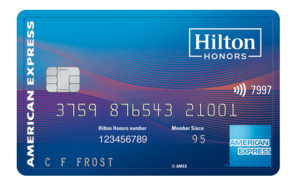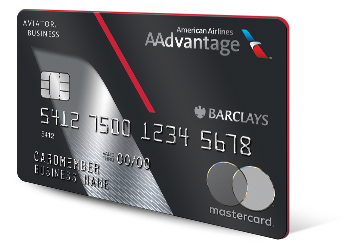
Is Credit Card Churning Sustainable?
Signup bonuses are big parts of credit card rewards. But, credit card issuers put limits in how many of them you can get through “once in an ‘x amount of time'” or discourage you from opening a lot of cards like the Chase 5/24 rule. While earning signup bonuses isn’t as easy as opening and closing the same card over and over again like it used to in the past, there are ways to repeat signup bonuses while you wait for the timer to reset and maintain your points balance.
What is Credit Card Churning?
Credit card churning is the act of signing up for credit cards just for their signup bonuses or time-limited benefits. Nowadays, many credit card issuers put limit in how many you can get. Some will require you to wait 2-4 years before you can get the same one again, or some will only allow once in a “lifetime”, like American Express.
There will be that natural period everyone will go through at some “dead-air” point on their credit card points journey where you just won’t be able to sign up for new credit cards, or pull the brakes and not get any signup bonuses. Thankfully, there are still ways to earn some rewards in the meantime on top of your day-to-day spend.
Retention Offers
Retention offers can help you sustain your points balance after you burn them from a nice trip and prolong your credit history by not closing your card, which can negatively affect your credit score. Plus, retention offer does not open a new line of credit, so your Chase 5/24 status won’t be affected either.
But admittedly, retention offer rewards usually aren’t as big as a signup bonus even though they may at times require spend requirement that may be as big as a regular signup bonus requirement. Not all credit card issuers would be willing to give them either, with the exception of American Express being the most generous to incentivize you to keep said card you’re considering about closing or downgrading. One important note is that Amex typically only allows 1 retention offer for every 2 years or 26 months to be safe.

Get Credit Cards with Spend Incentives
Some credit cards will have spend incentive bonuses, mainly hotel credit cards. The rewards may not be as big as a signup bonus, but they can still give outsized value compared to the annual fee you’d pay. Compared to a retention offer, you can reliably achieve them year over year as long as you can meet the spend requirement.
A popular spend incentive bonus is a free night certificate for a hotel stay. Hilton Honors Surpass and Hilton Honors Business Card get you a free night certificate that will work on most Hilton properties after reaching a $15k spend by the end of a calendar year. Depending on how you use them, the free night certificate can be worth more than $1000 by itself as it can be used on some of the most aspirational Hilton properties. This type of keeper card can be worth holding on to while you’re pulling the brakes on credit card applications.

Typically though, the bonuses earned from $15k spend is a sweet spot for hotel credit cards in general, and the opportunity cost on pursuing the bigger ones (like $60k spend to earn FNC) might be too much.
Co-branded Airline Cards
Many co-branded airline credit cards are still one of the most churnable cards out there and can be a supplement to replenishing points/miles for flights and maintain flexible points currency at the same time. There are also a few compelling business credit card options that won’t impact your Chase 5/24 status as well.

American Airlines credit cards from Barclays and Citi have decent policy when it comes to repeating signup bonuses. Its program is also great for partner Oneworld flights. My favorite redemptions include JAL First Class to Japan & Qatar Airways QSuites.
- Barclays allows you to earn the same signup bonus after 24 months of last account’s closure has passed.
- Citi allows you to earn a signup bonus within the Citi co-branded AA card family after 48 months after receiving the bonus.
United Airlines credit cards from Chase are churnable after 24 months of receiving the bonus. It’s an okay program for Star Alliance as there are better ones like Aeroplan and Turkish. I personally transfer United Miles to Marriott.
But, it’s important to understand how the individual airline program works, including their alliances and partnerships, before signing up for a co-branded airline credit card. By understanding what their award redemption entails, then you can make a short-term booking after earning the signup bonus and maintain your flexible points currencies.
Sample Churning Flowchart
Let’s say your first travel credit card is the Chase Sapphire Preferred. After you get its signup bonus, the timer of 48 months before you can get its signup bonus again will start.
- Year 1: Chase Sapphire Preferred, possibly add Chase Freedom Flex or Chase Ink cards if qualified
- Year 2: Amex, Citi, or Capital One cards
- Year 3: Hotel co-branded credit cards (Marriott, Hilton, IHG, Hyatt)
- Year 4: Airline co-branded credit cards (American, Alaska, Aeroplan, United)
- Year 5: Repeat with Chase Sapphire
This is just a sample, of course, and you’ll have to figure out your personal decision in how you want to strategize your credit card applications timing.
Conclusion
Churning is still doable and sustainable when you can acknowledge and manage different cards’ cooldown period. But remember, Amex cards have once in a lifetime signup bonuses, so their cards are the exception for the rule, at least for 7-10 years after earning the bonus of a card. Also, you’ll have more “dead-air” if you don’t apply for hotel and airline credit cards, which is fine if you don’t want to keep signing up for cards and managing them. In the end, churning can yield great rewards, but it won’t be for everyone as it will take work micromanaging your cards from the application timing to the spending amount.
